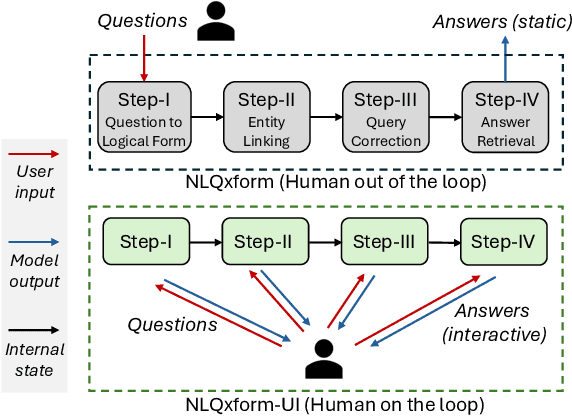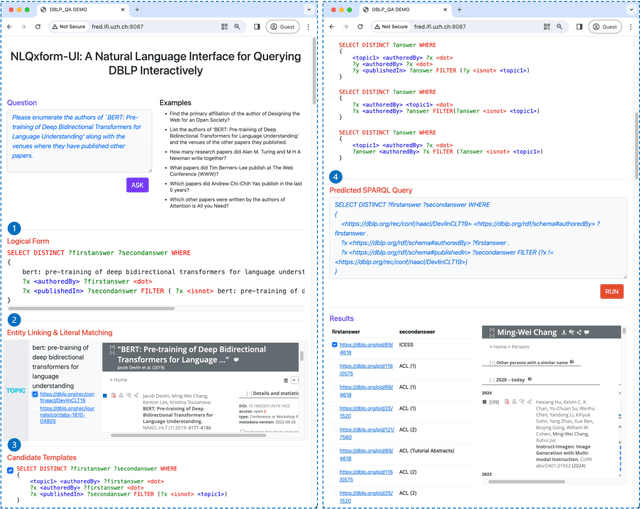Florian Ruosch
NLQxform-UI: A Natural Language Interface for Querying DBLP Interactively
Mar 13, 2024

Abstract:In recent years, the DBLP computer science bibliography has been prominently used for searching scholarly information, such as publications, scholars, and venues. However, its current search service lacks the capability to handle complex queries, which limits the usability of DBLP. In this paper, we present NLQxform-UI, a web-based natural language interface that enables users to query DBLP directly with complex natural language questions. NLQxform-UI automatically translates given questions into SPARQL queries and executes the queries over the DBLP knowledge graph to retrieve answers. The querying process is presented to users in an interactive manner, which improves the transparency of the system and helps examine the returned answers. Also, intermediate results in the querying process can be previewed and manually altered to improve the accuracy of the system. NLQxform-UI has been completely open-sourced: https://github.com/ruijie-wang-uzh/NLQxform-UI.
NLQxform: A Language Model-based Question to SPARQL Transformer
Nov 08, 2023Abstract:In recent years, scholarly data has grown dramatically in terms of both scale and complexity. It becomes increasingly challenging to retrieve information from scholarly knowledge graphs that include large-scale heterogeneous relationships, such as authorship, affiliation, and citation, between various types of entities, e.g., scholars, papers, and organizations. As part of the Scholarly QALD Challenge, this paper presents a question-answering (QA) system called NLQxform, which provides an easy-to-use natural language interface to facilitate accessing scholarly knowledge graphs. NLQxform allows users to express their complex query intentions in natural language questions. A transformer-based language model, i.e., BART, is employed to translate questions into standard SPARQL queries, which can be evaluated to retrieve the required information. According to the public leaderboard of the Scholarly QALD Challenge at ISWC 2023 (Task 1: DBLP-QUAD - Knowledge Graph Question Answering over DBLP), NLQxform achieved an F1 score of 0.85 and ranked first on the QA task, demonstrating the competitiveness of the system.
 Add to Chrome
Add to Chrome Add to Firefox
Add to Firefox Add to Edge
Add to Edge